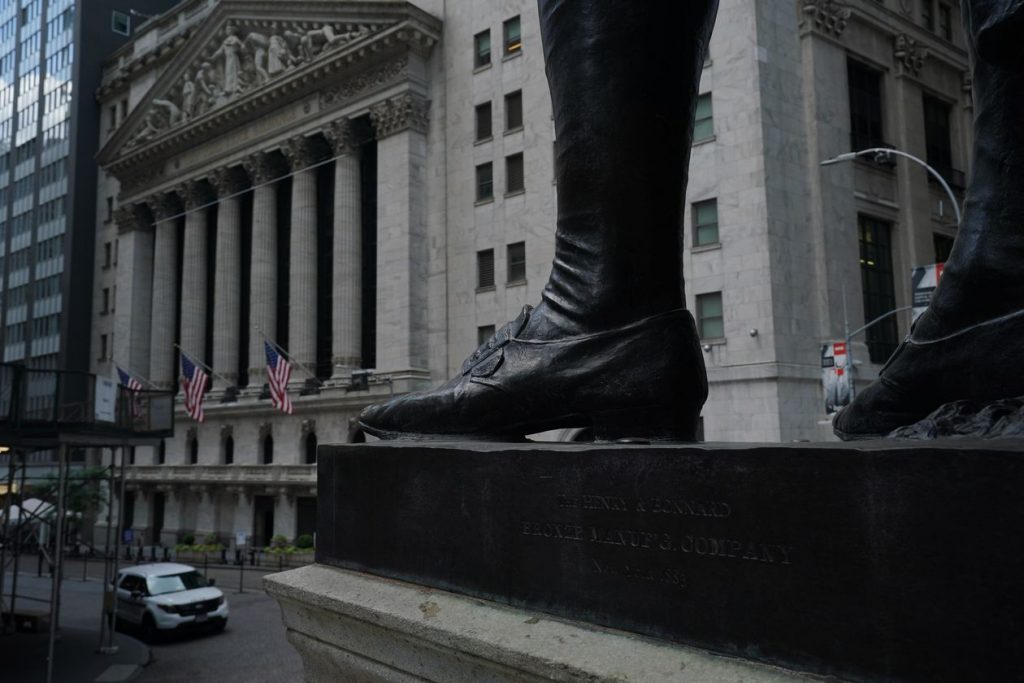
September hurt shareholders, not only because stocks fell but also because the things they’d bought to protect their portfolios also fell. From the S&P 500’s high on the 2nd of the month, stocks, Treasurys, gold, bitcoin and the VIX volatility index all dropped.
This total failure of hedging is unusual, but investors need to get used to the idea that Treasurys no longer provide the ballast for a portfolio.
It wasn’t just the normal pattern of asset returns that broke down. Within the stock market the correction in Big Tech upended many of the reliable ways to minimize losses. High-quality stocks, companies with strong balance sheets and reliable profits, fell by more than the market. Smaller companies beat bigger companies.
Within the S&P 500, cheap or “value” stocks outperformed, although they still lost money. But while Big Tech-dominated growth stocks lost out among large companies, among small companies growth beat value. Sector performance followed no discernible pattern either. And stocks that normally rise and fall faster or slower than the market, known in market jargon as high or low beta, didn’t behave predictably.
Now the froth has been blown off the big disruptive growth stocks, we can hope that the normal market relationships will reassert themselves. But the biggest hedge against losses, Treasurys, probably won’t be back as a useful tool for years, if ever.
The problem showed up in Japan in the 1990s after the country slashed interest rates and government bond yields plunged. But it has become most obvious with Germany. In the eurozone crisis of May 2011 to July 2012, German 10-year bunds gained 25%, similar to the loss on eurozone stocks. But by this year the plummeting yield and already-negative interest rates meant there was little more to gain: Bunds made almost nothing from the February stock-market high to the low, and have provided essentially nothing since (Japanese bonds have lost investors a small amount).
Treasurys have now followed suit. In the first phase of the pandemic they made roughly 10%, before the brief period of chaos in the bond market. But since then they’ve been basically flat, giving investors little to no protection—including inflicting a small loss as stocks fell from the Sept. 2 high.
The problem is that, with yields so low, it is hard for them to fall much further, causing prices to rise. The Federal Reserve might still step in with a new Operation Twist to buy more longer-dated Treasurys, which could lower the 10-year yield a bit from its current 0.7%. But even if it was reduced to zero, that would offer a paltry potential price gain of just 7% from the bonds.
Of course, the Fed could follow Japan and Europe in taking interest rates negative, which would create more space for bond gains, but policy makers have repeatedly insisted that such a policy would be inappropriate for the U.S. It’s worth noting that the U.K. used to say the same, but is now openly contemplating the idea.
Even negative rates only provide a brief respite, though: The European Central Bank reckons it could in principle go as low as minus 1%, but if German bund yields followed suit, the price gain for investors would still only be 7%. That doesn’t provide much protection against stock-price falls.
“Fixed income is now 100% fixed and 0% income,” says Jan Loeys, long-term strategist at JPMorgan. He recommends investors give up on short-term hedging entirely and focus instead on how to make gains in the long run. This includes using more instruments that offer equity-like short-term volatility but more predictable long-run returns such as junk bonds or preferred stocks.
Investors are no more likely to be willing to endure short-term losses now than they were in the past, though, and the hunt for alternatives to Treasurys is strong. The problem is that many of the suggested instruments are also sensitive to the same things as equities.
Gold, for example, is touted as the ultimate defensive asset, but it shares the sensitivity of stocks to inflation. Both gold and bitcoin are also dominated by speculation, so when there’s a speculative bust—as in September—they can be expected to share in the losses of stocks being dumped by traders rushing for cash.
Put options should protect against falls in the market, but lose money when stocks are flat or up and so are an expensive hedge in the long run. Volatility trading is even worse, costing a lot for more than very short-term use, and being messed up when volatility rises or falls in line with stocks, as it did in August and September.
For those with enough savings not to need to increase their wealth, Treasurys still offer a small guaranteed income, albeit less than expected inflation. The rest of us should plan for a more volatile portfolio and lower returns in the future than the past.





























